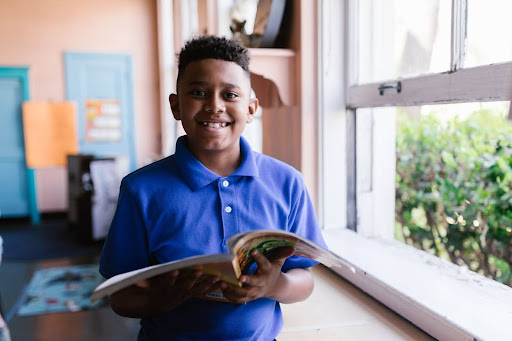
By
Study after study confirms it: as the coronavirus pandemic disrupted daily life in the U.S., gun violence surged nationwide, but disproportionately affected Black communities. Alarmed by increases in majority-Black cities like Detroit, Washington, D.C., and Milwaukee, the Centers for Disease Control and Prevention declared gun homicides a public health crisis.
But data in a new report has found that the tide of pandemic-era gun violence also swept in a disturbing number of school-age Black boys and girls, creating an educational crisis.
Since 2019, gun homicides among Black youths have more than doubled, and Black children are six times more likely than their white peers to die from gunfire, according to the February report by KFF, a health policy nonprofit. The report also found that Black boys and girls made up nearly half of all young people killed by firearms in the U.S., even though they make up just 14% of the youth population.
Moreover, the report found that most of the deaths were classified as homicides — not suicides or accidental shootings.
“In general, children of color are more often exposed to gun violence than their White peers,” regardless of income, according to the report. But “children living in areas with a high concentration of poverty are more likely to experience firearm-related deaths, and poverty disproportionately affects children of color.”
Negative School, Mental Health Effects
Nirmita Panchal, the report’s author, says the data on the pandemic-era surge shows Black children are even more exposed than their white peers to deadly gun violence — and that exposure can have long-term psychological effects that can hamstring their education.
“There have been some (studies) that show that gun violence can also impact their school performance,” Panchal says. “Just witnessing neighborhood violence, domestic violence, mass shootings — that exposure can have negative mental health outcomes” such as “increased absenteeism, difficulties concentrating,” and other behavior issues.
The report examined gun violence and homicides involving children and adolescents from 2019, the year before the pandemic emerged, to 2022, when the federal government declared the pandemic had ended. The goal: to determine if patterns had changed, whether there were demographic variants, and if there are any policies in place to address the issue.
Astonishing Increase in Youth Gunfire Deaths
What Panchal and her team found was astonishing: From 2019 to 2022, gunfire deaths among children ages 17 and younger increased by nearly 50%, becoming the leading cause of death for young people in the U.S. In 2022 alone, some seven children a day were shot and killed, according to the report.
“During this period, firearm death rates gradually rose until 2017, then slowed through 2019, before sharply rising with the onset of the pandemic and holding steady in 2022,” according to the report. From 2019 to 2022, the firearm death rate among children and adolescents increased by 46% (from 2.4 to 3.5 per 100,000).”
At the same time, gun assaults “accounted for two out of three firearm deaths among children and adolescents in 2022,” according to the report. “Leading up to the pandemic, gun assaults made up about half of all child and adolescent firearm deaths. However, from 2019 to 2022, the share of these firearm deaths attributed to gun assaults grew from 54% to 66%.”
Black Children Are Disproportionally Affected
Perhaps the most alarming data point, however, involved Black young people.
Since the pandemic began, “firearm death rates have sharply increased among Black and Hispanic children and adolescents” and doubled among Black youths during those three years, according to the report. “In 2022, the rate of firearm deaths among Black youth was 12.2 per 100,000 — substantially higher than any other racial and ethnic group and six times higher than White youth.”
Even excluding homicides, Black children were disproportionately affected by gun violence, according to the report.
“Black and male children and adolescents were more likely to experience nonfatal firearm injuries than their peers,” according to the report. Since then, however, “disparity among Black youth firearm injuries and exposures has been exacerbated since the pandemic began.”
While homicides get attention, Panchal says, “I think one of the things we’re highlighting here is, in addition to these youth deaths, there are also many more youth who go on to survive these gunshot wounds.”
At the same time, those survivors “may face additional obstacles with both their physical and mental health” that their families and teachers must deal with, Panchal says. “A shooting doesn’t just affect the youth who may be at the center of that gun violence exposure. It also affects the well being of their family and, perhaps, their community.”
While the data are alarming, Panchal points to different steps taken to help children exposed to gun violence, including the federal Safer Communities Act. Besides tightening gun laws, the legislation set aside millions of dollars for anti-violence intervention programs, after-school programs and accessible, school-based mental health programs. The report also points to other federal initiatives, including programs aimed to boost Black youth mental health in response to sharply rising suicide rates.
Still, the report ends on a cautionary note about what could happen if gun violence isn’t brought under control.
“Gun violence can lead to increased mental health and substance use concerns,” according to the report. “The recent increase in child and adolescent firearm injuries and deaths come at a time when concerns about youth mental health have grown, but access to and utilization of mental health care may have worsened.”


